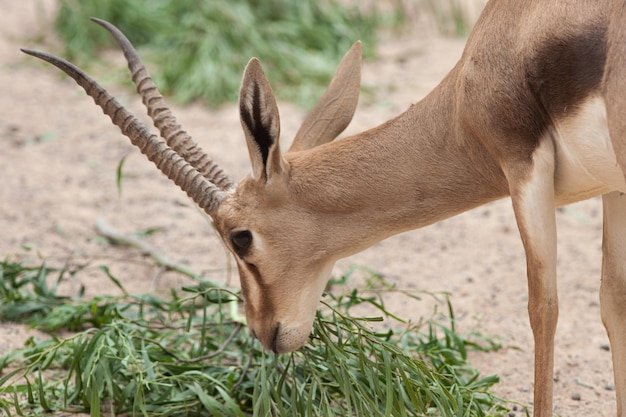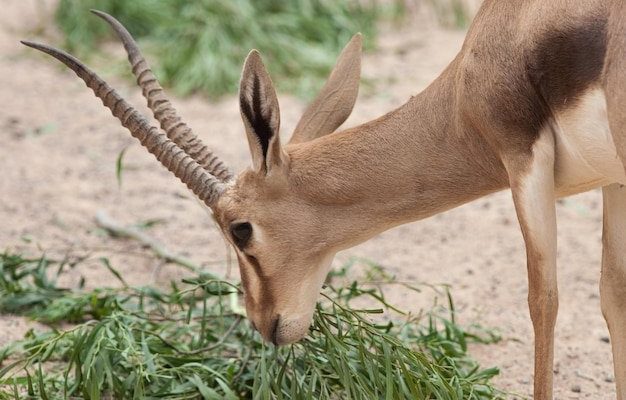
Whether you’re on a safari in Africa or exploring a wildlife reserve, it’s crucial to understand these beautiful creatures and how to behave in their presence. In this guide, I’ll walk you through everything you need to know about encountering a gazelle in the wild, ensuring that your adventure is both exciting and respectful to nature.
Understand Gazelle Behavior
Before you dive headfirst into the experience of spotting a gazelle, it’s important to understand their behavior. Gazelles are generally timid and shy animals. They’re built for speed, often sprinting away at the first sign of danger. Their primary instinct is to flee, not fight. So, if you encounter a gazelle, keep in mind that they may panic and run if they feel threatened.
Gazelles often graze in herds, which means you might see several of them together. They communicate through body language and subtle sounds. If they freeze or their ears perk up, it’s a signal that they might have sensed something unusual. This is your cue to stay calm and observe without making sudden movements.
Remember, gazelles are prey animals. Their keen senses help them survive against predators. This keen awareness means they might notice you before you even spot them. So, if you’ve locked eyes with a gazelle, take a moment to appreciate the encounter and what it represents in the wild.
Stay Calm and Observe
When you spot a gazelle, your first instinct might be to rush forward, whip out your camera, and click away. However, calmness is crucial. Instead of acting impulsively, take a few deep breaths. This helps you remain still, which can prevent startling the animal.
Find a comfortable spot to stand or sit. Gazelles are naturally curious and might come closer if they feel safe. Observing their behavior from a distance can be incredibly enriching. You’ll get to see them interact with each other, feed, and even bond. It’s like being a quiet guest at a party, soaking in all the interactions without interrupting the flow.
Just remember that the goal is to experience nature without imposing on it. Maintain a respectful distance, usually around 50-100 yards, to ensure you don’t disturb their natural behavior. And while you may want a closer shot for that perfect photo, a zoom lens can be your best friend here.
Avoid Any Sudden Movements
You might be wondering, “What if the gazelle looks at me?” The urge to wave or move your arms could be strong, but this is where caution is key. Sudden movements can startle gazelles, triggering their flight response. So, stay still and composed.
If you have the chance to photograph them, take your time. Focus on framing your shot without creeping closer. Use wide-angle lenses to capture the beauty of the landscape along with the gazelle. It’s all about patience. Gazelles will often bring their heads down to graze, giving you a perfect moment to snap that photo without any need for abrupt shifts in your posture.
If you happen to be with others, remind them to stay calm as well. Movements from multiple people can easily alarm the animals. It’s about creating a peaceful space for both you and the wildlife.
Understand the Risks
While gazelles are generally non-aggressive, it’s important to understand that all wild animals carry some level of risk. If a gazelle feels cornered, it might act in self-defense. This is particularly true during mating season or if they have young ones nearby. For example, a mother gazelle will fiercely protect her fawn.
That said, the best way to avoid any risks is to respect their space. Never attempt to approach them. If the gazelle starts to act defensively—like stamping its feet or snorting—it’s time to back off. Recognizing these signs early can prevent a potentially dangerous situation.
Also, be aware of your surroundings. Other wildlife may be nearby, and while gazelles aren’t typically aggressive, predators like lions or hyenas might be lurking. Always keep your environment in mind so you can retreat safely if needed.
Document Your Experience Responsibly
In this age of social media, it can be tempting to share that incredible encounter with your friends and followers. But it’s important to document responsibly. Always prioritize the well-being of the gazelle and the environment. Avoid posting your location in real-time to protect the animal from being overwhelmed or approached by others.
When taking photos, aim to capture the beauty without disturbing their habitat. For example, you could share stories about your experience rather than the exact place where you saw the gazelle. This helps raise awareness about wildlife conservation, which is crucial for their survival.
Here’s the thing: your experience doesn’t just serve as a personal memory; it can inspire others to appreciate and protect wildlife. So, share your insights and foster a community that values nature.
Leave No Trace
One of the most important principles of wildlife observation is to leave no trace. This means whatever you bring with you should leave with you. Whether it’s food wrappers, plastic bottles, or other trash, always pack it out. Habitat preservation is key to ensuring that gazelles and other wildlife continue to thrive in their natural environments.
Additionally, stick to designated paths and areas. Walking off the trail can disrupt the local flora and fauna. Every little step counts when it comes to conservation.
You can also make a difference by supporting wildlife organizations. Many focus on protecting habitats and educating the public about sustainable practices. Contributing in any way can help secure a healthier future for gazelles and their ecosystems.
Wrap-Up: Cherishing the Encounter
So, what do you do if you encounter a gazelle in the wild? You pause, breathe, and appreciate the moment. Remember to observe silently, keep your distance, and respect their space. Gazelles are wondrous creatures that remind us of the beauty of nature and the importance of wildlife conservation.
Whether you’re planning a safari or just dreaming of one, carry these tips in your heart. They’ll guide you to not just see a gazelle but to truly experience the joy of nature. Each encounter can be a chance to learn and connect with the wild—one graceful leap at a time.

